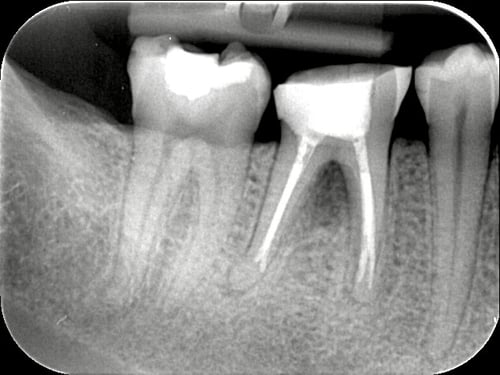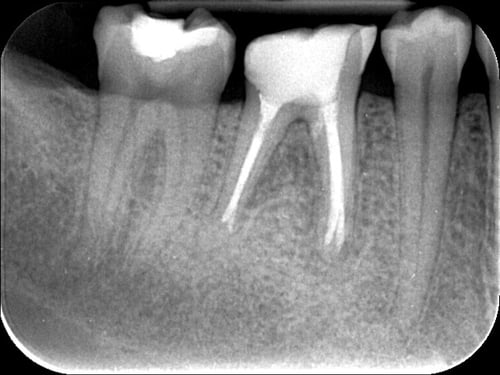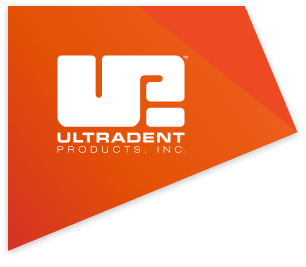A user report by Tapio Nurmi
Mineral trioxide aggregate (MTA) used to be an excellent and proven repair material for a wide range of endodontic indications. However, users have always been faced with challenges due to the complicated handling properties. The endodontic specialist Tapio Nurmi (Finland) talks about his experiences with MTA and how the innovative MTAFlow™ and MTAFlow™ White repair cements have significantly helped to overcome the common challenges.
For many years, MTA has been an amazing and extremely valuable material in the fields of endodontics. In case conventional techniques do not show the required effect due to issues like pulp exposure, furcation perforation or wide roots with an open apex, MTA is the answer. It helps to carry out the treatment in an appropriate way and it fosters the healing process in a faster and more beneficial way than other methods.
In some cases, such as apexification or when you need to perform an apical plug, MTA is an option to replace the use of any fillings in the apical third of the roots. In short words: users can simply rely on MTA instead of performing the standard filling process. By this logic, MTA should always be considered as a final solution. Once it's placed, it cannot be opened anymore.
Besides all these great qualities, cements such as MTA can set as hard as concrete. MTA based repair cements have really been difficult to handle and complicated to deliver in the past. Especially in small canals the application process has been a challenge. Due to the sandy consistency, the material had to be pushed into the fragile canals with incredible pressure. As a user, I had to open the canals wider and wider in order to place the MTA accurately. During such a treatment, the entire root canal structure consequently becomes increasingly fragile.
Around two years ago, an innovative new product was launched which is the key to all the above-mentioned issues: MTAFlow repair cement. It can be applied precisely to the point where it is needed, using a convenient syringe and a 29 ga NaviTip™ tip. What a positive difference this easy and comfortable way of delivery makes to my entire treatment protocol! When I tested the MTAFlow cement the first time, I discovered immediately that the consistency can be adjusted according to the clinical needs. In the thin consistency, is much more flowable than other conventional MTA materials. MTAFlow cement can even be described as creamy. This means that not as much pressure must be used during the process. The material comes out of the syringe without a hassle and offers a smooth process for the root canal placement.
With a particle size equal or smaller than 10 microns, the bioactive MTAFlow cement powder is finer than others available on the market. Instead of water, the MTAFlow repair powder is hydrated with a proprietary gel. This makes it easier to control its consistency, especially when compared to other products on the market, which have a coarse powder that needs to be mixed with water. Smart and well-elaborated is the fact that the consistency of the MTAFlow cement can be changed according to the individual treatment requirements. When I use the product in root canals, the consistency ideally is as smooth as melted ice-cream. Starting from a very thin consistency when you need to deliver right to apical part of root canals (to be delivered with a NaviTip 29 ga tip), up to a putty consistency when a root end restoration is needed, MTAFlow cement is a great clinical help.
In many cases, an endodontic treatment is literally the last instance. Following a classic protocol, I prepare and clean the canals carefully, but accidents can happen in any step of the root canal treatment (mainly during the access of difficult calcified root canals). In terms of the root canal filling, MTAFlow cement is a good solution to repair accidents. It seals perforation areas extremely safely.
Regardless of the consistency, MTAFlow cement offers a solution for all endodontic repair cases, such as pulp capping, furcation perforation repair, pulpotomy filling, resorption repair, apexification, and apical closure. Each procedure can be accomplished with a convenient delivery system the only thing you have to do is to choose the suitable tip. At the same time, MTAFlow cement has a good working time, as it does not cure during the usual handling procedure. Once set, the repair cement forms a layer of hydroxyapatite, which induces a great healing reaction.
Some months ago, this original MTAFlow repair cement was amended by its younger “brother”: the MTAFlow White repair cement. The MTAFlow White cement offers all the same great features of the original MTAFlow cement. Additionally, as a dentist, it’s always reassuring to work with a new material that comes with a new radiopacifier that does not stain dentin: especially in the anterior region this is a big plus.
Of course, I have also tried a range of other competitive products during my career. But none of them convinced me to the same extent. Either they did not reveal a sufficiently sharp x-ray contrast, or they were much more complicated to handle. If I had to rate MTAFlow White cement on a scale from one to ten, with one being very bad and ten being the best rating, I would honestly grant it ten points.
It is an amazing product, especially for complicated cases when accidents occur or for complicated anatomies, such as what we find in small, curved, and even calcified canals. Also, the quality and speed of the healing process makes me smile again and again. That is just what dentists have been waiting for.
Clinical case:


32-year-old patient whose periapical x-ray revealed a change suggestive of periapical infection. Old perforation in the area of the mesial furcation was found in connection with root canal re-treatment. Perforation was repaired with MTAFlow White cement and root canals filled with warm gutta-percha technique. In the 18-month follow-up, the area was found to be nicely improved.
About the author:
 Tapio Nurmi
Tapio Nurmi
Specialist in Clinical Dentistry (endodontist, cariologist)
Helsinki, Finland
- 2005: Graduation from the Department of Dentistry, University of Helsinki
- 2014: Specialist, Clinical Dentistry, Cariology and Endodontist, University of Helsinki
- Clinical teacher
2005–2007: Metropolia, Dental Hygienist school
2008–2010: Helsinki City Teaching Health Center, University Dental Clinic
2015–2017: Teaching of specialized dentists, Oral Dental Group
- 2004–2006: Health Center Dentist, City of Helsinki
- 2010–201: HUS, Oral and Maxillofacial Outpatient Clinic
- 2011–2014: PKS-SEHYK (Helsinki Metropolitan Area Oral Special Care Unit)
- Since 2016: Private practice


_User%20Report_Tapio%20Nurmi_EU.png)





